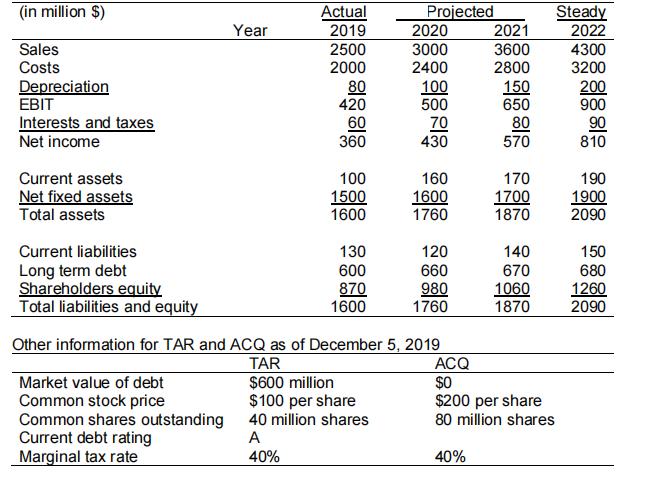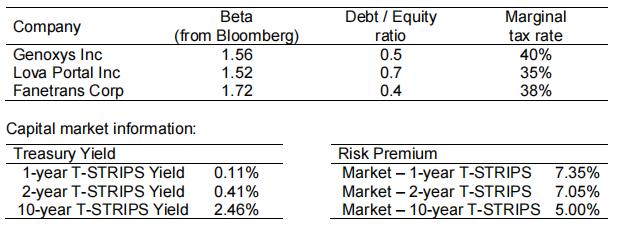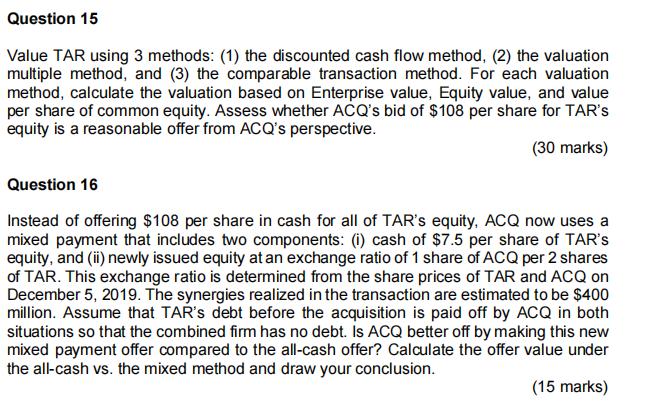Question
On January 5, 2020, Arkansas Cooper Quarters Inc (ACQ) made an acquisition bid of $108 per share in cash for all of Texas American Refinery
On January 5, 2020, Arkansas Cooper Quarters Inc (ACQ) made an acquisition bid of $108 per share in cash for all of Texas American Refinery Corp (TAR)’s equity. Analysts forecast TAR’s income statement and balance sheet to be as follows. Year denotes the fiscal year ending 31st December.

Analysts forecast that starting from 2022, TAR’s free cash flow will settle to a growth
rate of 3% per year indefinitely. They believe that TAR aims to keep the current debt ratio constant in the future. TAR has maintained an insignificant amount of cash in the
balance sheet (assume cash equals zero throughout). The Weighted Average Cost of Capital (WACC) is the appropriate discount rate for TAR.
Analysts examine TAR’s current outstanding debt and price all debt into a comparable set of zero coupon bonds that mature in 10 years and sell for 61.027% of par value.
The compounding frequency is semi-annual.
After estimating beta for TAR using recent historical data, analysts find that their estimate using this method is out of range of those by similar-risk firms in the industry.
Therefore they decide to use beta of comparable firms in the same industry to estimate TAR’s beta. Analysts identify the three following firms that they believe to be
appropriate comparable firms. Analysts conclude that they will rely on the median beta of these comparable firms to value TAR. They also assume that neither TAR nor these
comparable firms have a significant amount of cash to be adjusted when calculating beta or firm value.

Analysts identify the following recent acquisitions that they believe to be appropriate to value the acquisition of TAR by ACQ. Analysts conclude that they will rely on the mean “Enterprise Value / EBITDA” to value TAR using the “valuation multiple” method, and on the mean “Acquisition Premium” using the “comparable transaction” method. Acquisition Premium is defined as the percentage difference between the offer price per common share outstanding and the target firm’s stock price four weeks before the acquisition announcement. Analysts also include all synergies in their cash flow forecast (presented in the above income statement and balance sheet) and valuation multiples (presented below).

Use the above information to answer both required questions 15 and 16.

(in million $) Sales Costs Depreciation EBIT Interests and taxes Net income Current assets Net fixed assets Total assets Current liabilities Long term debt Shareholders equity Total liabilities and equity Market value of debt Common stock price Common shares outstanding Year Current debt rating Marginal tax rate Actual 2019 2500 2000 80 420 60 360 100 1500 1600 130 600 870 1600 Projected 2020 3000 2400 100 500 70 430 160 1600 1760 Other information for TAR and ACQ as of December 5, 2019 TAR $600 million $100 per share 40 million shares A 40% 120 660 980 1760 2021 3600 2800 40% 150 650 80 570 170 1700 1870 140 670 1060 1870 ACQ $0 $200 per share 80 million shares Steady 2022 4300 3200 200 900 90 810 190 1900 2090 150 680 1260 2090
Step by Step Solution
3.43 Rating (153 Votes )
There are 3 Steps involved in it
Step: 1
Answer Question 15 1 Discounted Cash Flow DCF Method Enterprise Value Terminal Value 810 x 1 003 WACC 003 27000 million Present Value of Free Cash Flo...
Get Instant Access to Expert-Tailored Solutions
See step-by-step solutions with expert insights and AI powered tools for academic success
Step: 2

Step: 3

Ace Your Homework with AI
Get the answers you need in no time with our AI-driven, step-by-step assistance
Get Started


